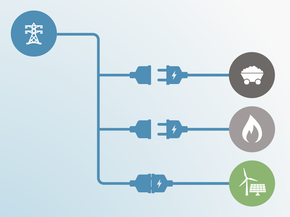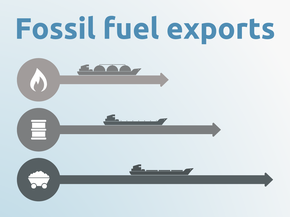Country summary
Overview
Australia’s climate policy has further deteriorated in the past year, as it focusses on propping up the coal industry and ditches efforts to reduce emissions, ignoring the record uptake of solar PV and storage and other climate action at state level. The Australian government has turned its back on global climate action by dismissing the findings of the IPCC Special Report on Global Warming of 1.5°C and announcing it would no longer provide funds to the Green Climate Fund (GCF).
Australia’s emissions from fossil fuels and industry continue to rise and, based on the most recent quarterly inventory, are now 6% above 2005 levels and increasing at around 1% since 2014. Under current polices these emissions are headed for an increase of 9% above 2005 levels by 2030, rather than the 15–17% decrease in these emissions required to meet Australia’s Paris Agreement target. This means Australia’s emissions are set to far outpace its “Insufficient” 2030 target.
The government has abandoned any policy efforts to achieve emissions reductions in the energy and transport sectors. Instead, its plans to underwrite a new coal power plant are completely inconsistent with the need to phase out coal globally by 2050 and in OECD countries by 2030. If all other countries were to follow Australia’s current policy trajectory that we rate “Highly Insufficient”, warming could reach over 3°C and up to 4°C.
While the federal government continues to repeatedly state that Australia is on track to meet its 2030 target “in a canter”, the Climate Action Tracker is not aware of any scientific basis, published by any analyst or government agency, to support this. Australia’s emissions have been increasing since 2014, when the federal government repealed the carbon pricing system, and the latest quarterly emissions inventory to June 2018 (published in November 2018) shows continuing increases. Emissions are projected to grow through 2030, instead of reducing in line with the 2030 target.
The federal government continues to promote coal as a solution to an energy security issue it claims exists but which has not been identified by the Australian Energy Market Operator. It proposes to underwrite new coal-fired power generation by guaranteeing to pay any future carbon price-related costs, create barriers to renewable energy and obfuscate its climate policies, the reality on the ground at the state level, public opinion and across the business sector in Australia, is very different.
The government continues to push for policies aimed at propping up uncompetitive coal-fired power. This follows a rejection of the recommendations of the 2017 Finkel report, as well as, in August 2018, dropping an alternative instrument, the National Energy Guarantee. The Emissions Reduction Fund (ERF)—the so-called “centrepiece” of the Australian government’s policy suite to reduce emissions—does not set Australia on a path to meeting its targets as has been reiterated in the latest review by the Climate Change Authority (Climate Change Authority, 2017).
Instead of introducing new policies to address the structural change needed (CCA 2017), the government is now considering allowing international units to be used for compliance. The safeguard mechanism also risks counteracting the emissions reductions the ERF is supposed to deliver and further undermines the achievement of the 2030 target (Reputex, 2018) by increasing emissions allowances for large industry facilities.
All states and territories (except Western Australia) now have strong renewable energy targets and/or zero emissions targets in place (Climate Council, 2017). South Australia is widely seen as a global leader: it has one of the highest shares of variable renewable energy, with 48% share of wind and solar total generation in 2017 (IEEFA, 2018), the world’s largest lithium-ion battery, and innovative projects for renewable hydrogen and virtual power plants. Households across Australia are massively deploying small-scale solar and increasingly combining this with battery storage: about 29% of dwellings in South Australia and 27% in Queensland had solar PV by early 2018, with substantial shares in several other states and territories as well, a trend that is showing no sign of slowing down. Public opinion is supportive of renewable energies and climate policy (Essential, 2017).
In a recent poll, more than 70% of Australians want the government to set a high renewable energy target to put downward pressure on power prices and reduce emissions. In “Australia’s climate policy survey”, capturing the views of Australian business and industry, 92% of respondents say Australia’s current climate and energy policy is insufficient to meet the required targets. A further sign of escalating and widespread public disquiet and concern at their government’s lack of action on climate change was a unprecedented, nation-wide strike by school children in late November 2018
Australia ratified the Paris Agreement on 6 November 2016. Its Nationally Determined Contribution (NDC), includes a target of reducing GHG emissions, including land use, land use change and forestry (LULUCF), by 26–28% below 2005 levels by 2030. This target is equivalent to a range of 15.1–17.4% below 2005 around levels of GHG emissions excluding LULUCF in 2030 (or referenced to 1990, 3% to 6% above 1990 levels of GHG emissions excluding LULUCF in 2030). However, current policies are projected to increase GHG emissions excluding LULUCF by about 9% above 2005 levels by 2030.
Further analysis
Latest publications
Stay informed
Subscribe to our newsletter







